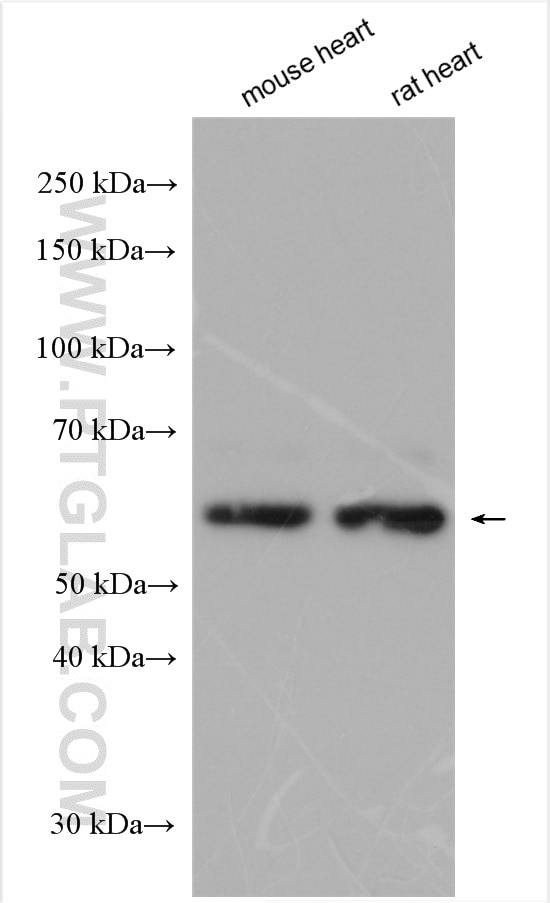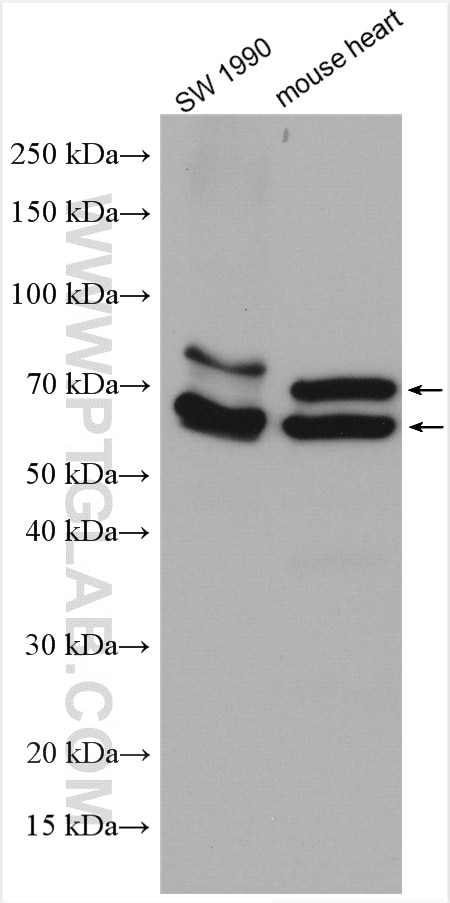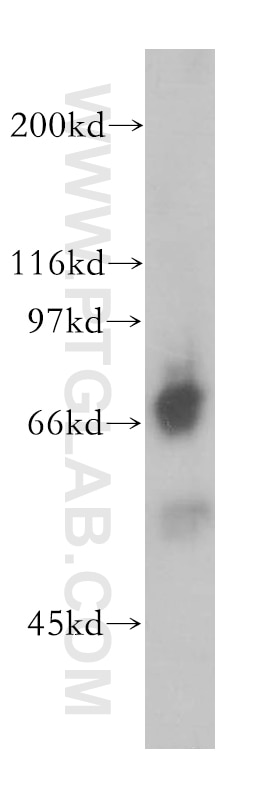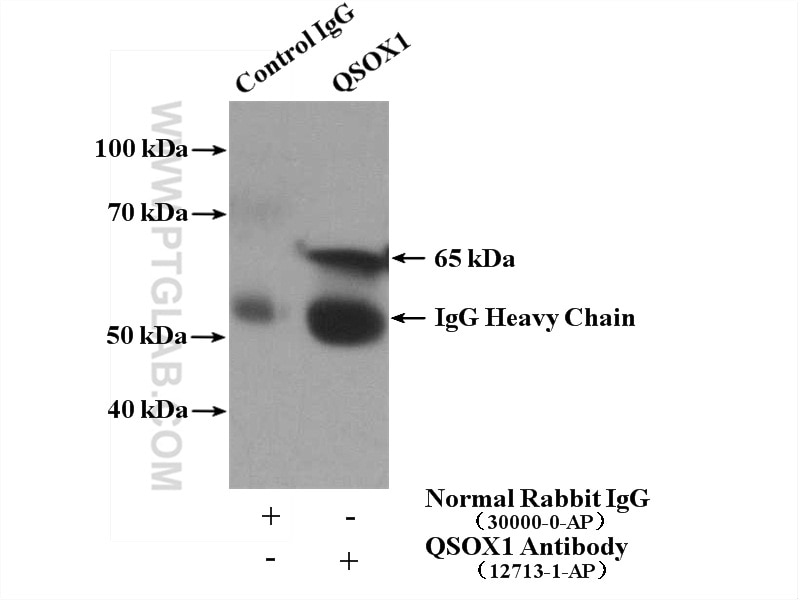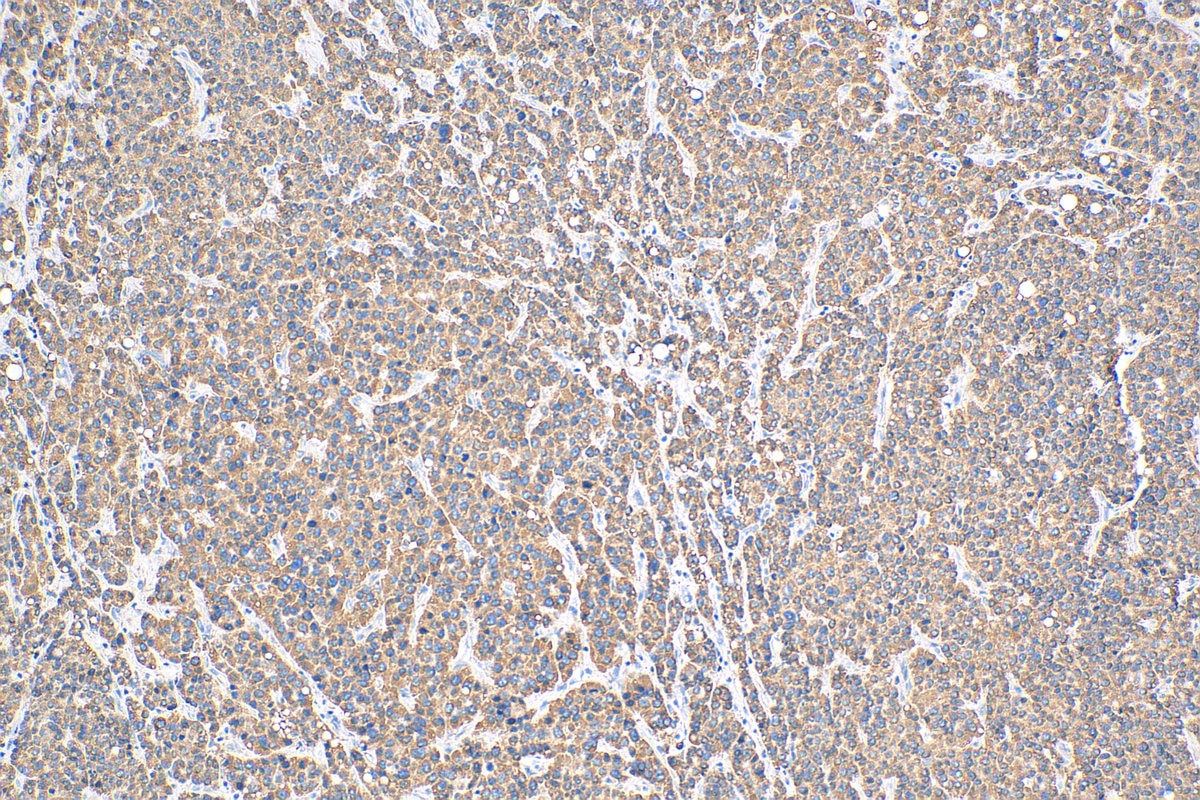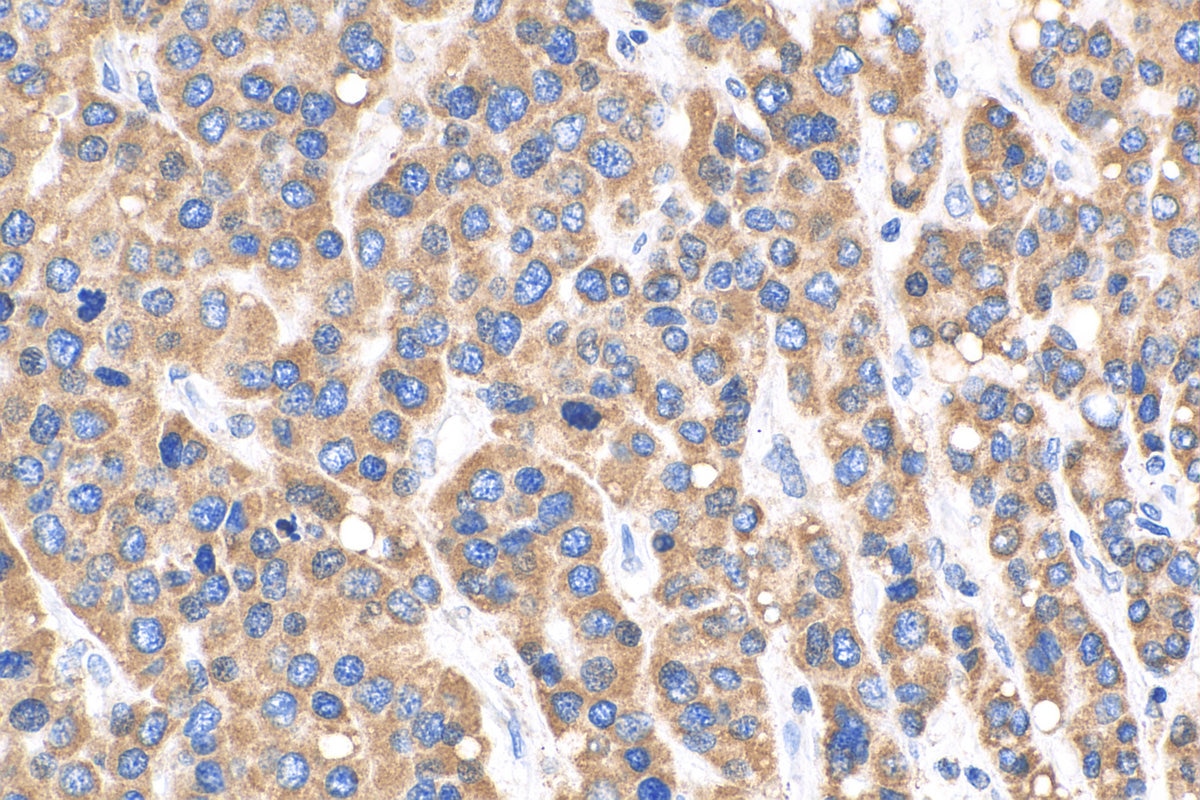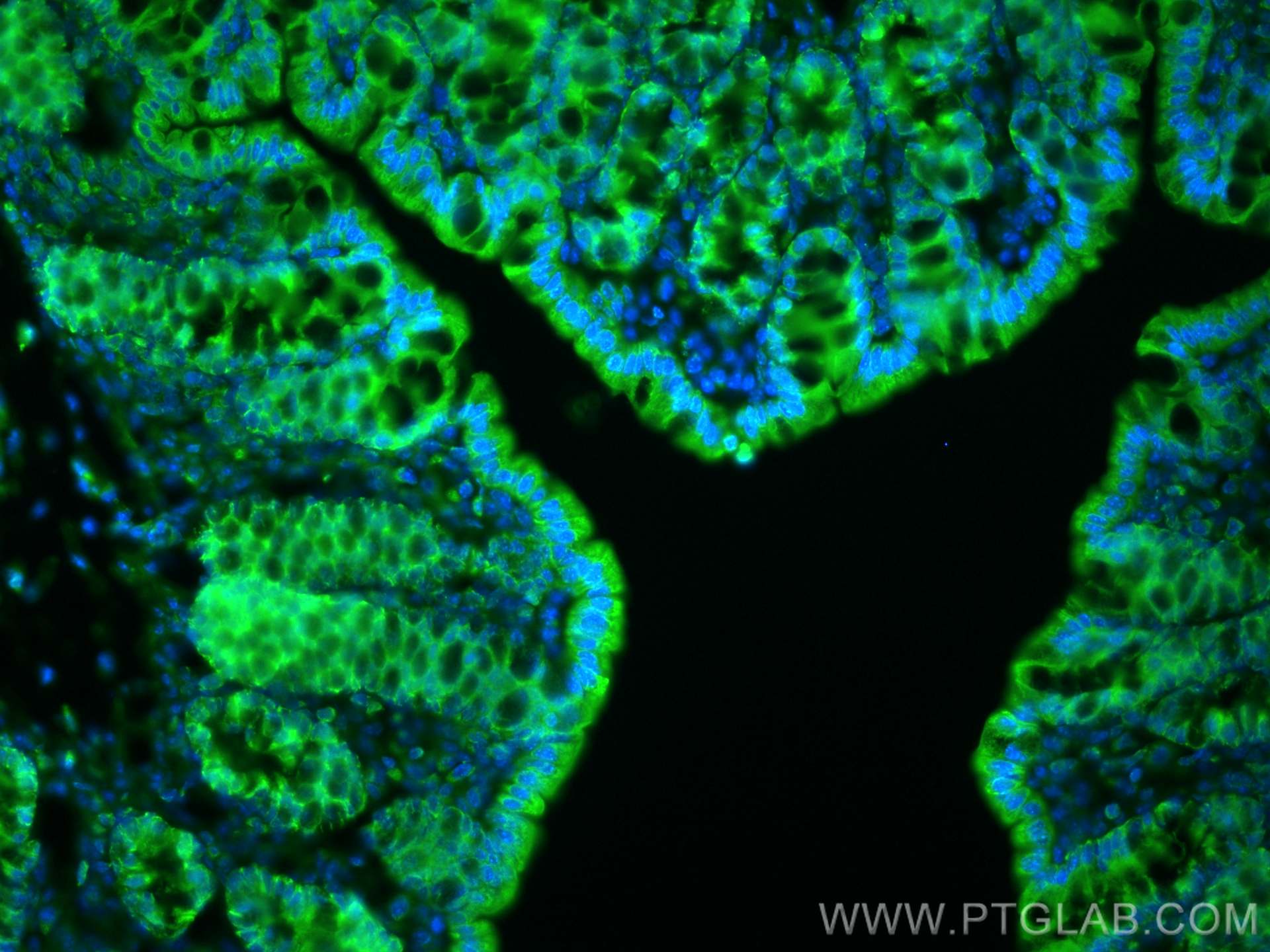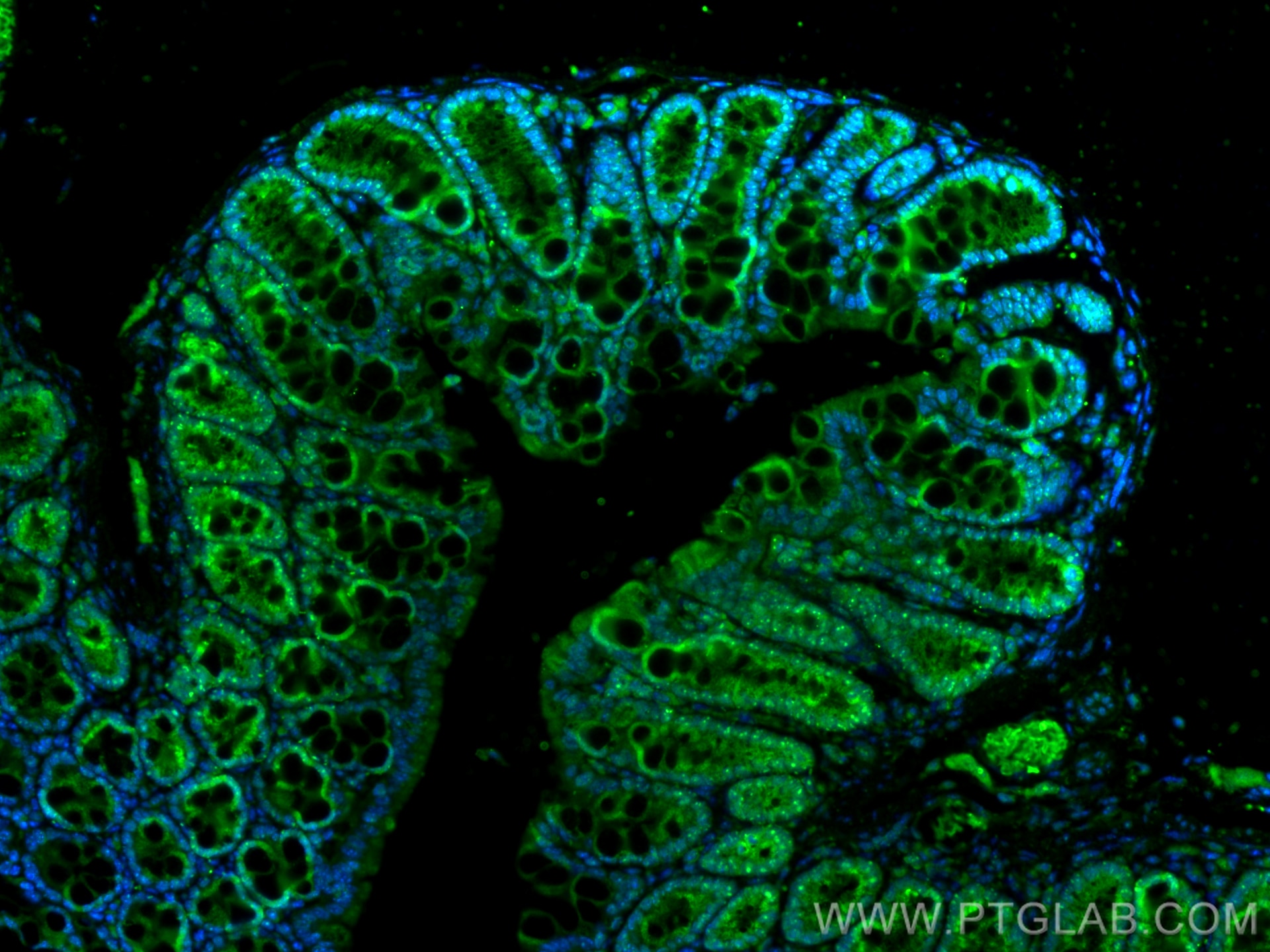Validation Data Gallery
Tested Applications
| Positive WB detected in | SW 1990 cells, mouse heart tissue, human placenta tissue, rat heart tissue |
| Positive IP detected in | SW 1990 cells |
| Positive IHC detected in | human liver cancer tissue Note: suggested antigen retrieval with TE buffer pH 9.0; (*) Alternatively, antigen retrieval may be performed with citrate buffer pH 6.0 |
| Positive IF-P detected in | mouse colon tissue |
Recommended dilution
| Application | Dilution |
|---|---|
| Western Blot (WB) | WB : 1:500-1:2000 |
| Immunoprecipitation (IP) | IP : 0.5-4.0 ug for 1.0-3.0 mg of total protein lysate |
| Immunohistochemistry (IHC) | IHC : 1:50-1:500 |
| Immunofluorescence (IF)-P | IF-P : 1:50-1:500 |
| It is recommended that this reagent should be titrated in each testing system to obtain optimal results. | |
| Sample-dependent, Check data in validation data gallery. | |
Published Applications
| KD/KO | See 1 publications below |
| WB | See 15 publications below |
| IHC | See 10 publications below |
| IF | See 3 publications below |
| CoIP | See 1 publications below |
Product Information
12713-1-AP targets QSOX1/Quiescin Q6 in WB, IHC, IF-P, IP, CoIP, ELISA applications and shows reactivity with human, mouse, rat samples.
| Tested Reactivity | human, mouse, rat |
| Cited Reactivity | human, mouse, rat, hamster |
| Host / Isotype | Rabbit / IgG |
| Class | Polyclonal |
| Type | Antibody |
| Immunogen | QSOX1/Quiescin Q6 fusion protein Ag3396 相同性解析による交差性が予測される生物種 |
| Full Name | quiescin Q6 sulfhydryl oxidase 1 |
| Calculated molecular weight | 747 aa, 83 kDa |
| Observed molecular weight | 66-83kDa |
| GenBank accession number | BC017692 |
| Gene Symbol | QSOX1 |
| Gene ID (NCBI) | 5768 |
| RRID | AB_2173314 |
| Conjugate | Unconjugated |
| Form | Liquid |
| Purification Method | Antigen affinity purification |
| UNIPROT ID | O00391 |
| Storage Buffer | PBS with 0.02% sodium azide and 50% glycerol pH 7.3. |
| Storage Conditions | Store at -20°C. Stable for one year after shipment. Aliquoting is unnecessary for -20oC storage. |
Background Information
QSOX1(Sulfhydryl oxidase 1) catalyzes the oxidation of sulfhydryl groups in peptide and protein thiols to disulfides with the reduction of oxygen to hydrogen peroxide.It has two isoforms with the molecular weight of 67 kda and 83 kDa,respectively. It is detected a band of 95 Kda in HT1080 cell lines (PMID:17331072).Isoform 1 is expressed on golgi apparatus membrane and isoform 2 is secreted (PMID:10708601). The isoform1(QSOX1a) is the full length of QSOX1, approximately 78 kd; and the isoform2(QSOX1b) is the splicing form, approximately 62kd(PMID:14633699; 2496424). QSOX1 is highly expressed in tumor cell lines but is not expressed in adjacent normal cells (PMID:21989104).
Protocols
| Product Specific Protocols | |
|---|---|
| WB protocol for QSOX1/Quiescin Q6 antibody 12713-1-AP | Download protocol |
| IHC protocol for QSOX1/Quiescin Q6 antibody 12713-1-AP | Download protocol |
| IF protocol for QSOX1/Quiescin Q6 antibody 12713-1-AP | Download protocol |
| IP protocol for QSOX1/Quiescin Q6 antibody 12713-1-AP | Download protocol |
| Standard Protocols | |
|---|---|
| Click here to view our Standard Protocols |
Publications
| Species | Application | Title |
|---|---|---|
Redox Biol Quiescin sulfhydryl oxidase 1 promotes sorafenib-induced ferroptosis in hepatocellular carcinoma by driving EGFR endosomal trafficking and inhibiting NRF2 activation. | ||
Breast Cancer Res High expression of QSOX1 reduces tumorogenesis, and is associated with a better outcome for breast cancer patients. | ||
Breast Cancer Res Expression of quiescin sulfhydryl oxidase 1 is associated with a highly invasive phenotype and correlates with a poor prognosis in Luminal B breast cancer. | ||
Mod Pathol QSOX1 expression is associated with aggressive tumor features and reduced survival in breast carcinomas. | ||
